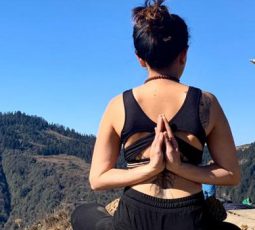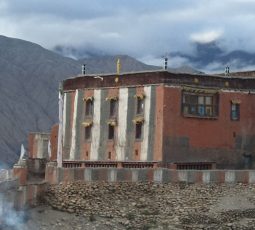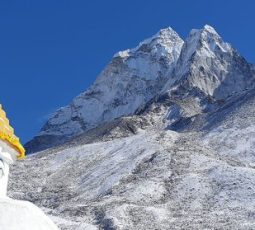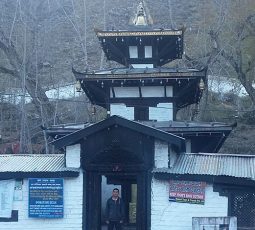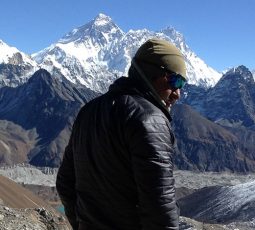Location: Langtang Region
Price: US $1180 P/P
11 Days
Trip Facts
Group Size
2+
Trip Grade
Easy
Accommodation
Tea house/ Hotel/ lodge
Max Altitude
4350 m
Meals
All western and typical local food.
Transportation
Bus/Car/jeep
You may also like
Trip Highlights
- Short easy and scenic trekking places in Langtang National park.
- Opportunities to explore amazing landscapes, Big forests of Rhododendrons and bamboo, Tibetan cultural villages, Chortens and old monasteries.
- Options to Ascends Cherkuri viewpoint at 4984 m.
- The Scenic Drive from Kathmandu to Syabrubensi viewing beautiful landscapes and villages.
- Unspoiled Langtang National park that lies between Nepal- China (Tibet) Borders.
- Learn More about Tibetan Buddhist Culture
- Experience different diversity of flora and fauna
- The best place for seeing Mt.Dorje Lakpa (6990 m), Langtang II (7227 m), Langtang Lirung (7200 m) and Ganesh Himal (7429 m).
- Enjoy the typical Tamang Village and community
Langtang valley trek is one of the most gifted as well as diverse moderate trekking destinations of the Himalayas. This trek combines the likes of nature, culture as well as scenic delights perfectly. Ecologically lush with a well-managed trail makes Langtang perfect for trekking lovers all around the world.
The lifestyle in the mountains with a hint of Tibetan influence are some best bits to remember, apart from trekking. Kyangjin Ri and Langtang village in the shades of Langtang Lirung (7246 m) defines this magnificent trek.
The Langtang Valley trek starts from the central hills of Nepal. Entering the Langtang National Park the trail passes through a number of Tamang settlements. As we gain elevation the landscape changes exposing the majestic Langtang Himal range. Sharing the local meals, trekkers can enjoy the Tamang culture and traditions.
Numerous Mani walls and prayer flags welcome visitors to each new village here. Kyanjin Gompa and the various monasteries and Chortens help you to embrace the art of living in the Himalayas. From different vantage points here, travelers can get extensive views of Langtang Lirung, Manaslu, Shishapangma, Naya Kang, Dorje Lakpa as well as other high mountain peaks.
Upon completion of this adventure-packed journey, you will know the whole Himalayas better. Join Magic Himalaya Treks for the best trekking experience in the Langtang region.
Langtang region
The best trek in the Langtang region is the famous Langtang Valley trek. Langtang Valley trek is the combination of the remote valley of Langtang as well as other spectacular valleys. It has a spectacular panoramic view. Langtang Valley has to be one of the most rewarding short treks available in Nepal. It is the east-west running valley of some spectacular alpine scenery. It is a great place to meet unique people.
A minimum of one week is required for a trek in this valley. It is required to add some days for acclimatization and for side trips in the valley.
Langtang Valley trekking is also popular as Valley of the Glacier. This Langtang Valley area is the closest place where we can see massive snowed capped mountains as well as glaciers. It is just 19 miles north of Kathmandu Valley.
Outline Itinerary
Day 1: Arrive at Kathmandu Airport.
Accommodation: Hotel or resort as per your request.
Meal Includes Breakfast. In general, we prefer the BB plan for your stay in cities So, you can choose Varieties of food menus in different restaurants around cities.
Day 2: Drive to Syaprubensi (1550 m).
Accommodation: Tea house available.
Meal Includes: Full Board; Breakfast, Lunch as well as Dinner
Day 3: Trek to Lama Hotel (2380 m) 5-6 hours walk.
Accommodation: Tea house available.
Meal Includes: Full Board; Breakfast, Lunch as well as Dinner
Day 4: Trek to Langtang Village (3307 m)-5 hours walk.
Accommodation: Tea house available.
Meal Includes: Full Board; Breakfast, Lunch as well as Dinner
Day 5: Trek to Kenjing Gompa (3798 m)-3 hours walk.
Accommodation: Tea house available.
Meal Includes: Full Board; Breakfast, Lunch as well as Dinner
Day 6: Kyangjin Gompa Exploration-Kyangjin Ri (4350 m).
Accommodation: Tea house available.
Meal Includes: Full Board; Breakfast, Lunch as well as Dinner
Day 7: Trek back to Lama Hotel
Accommodation: Tea house available.
Meal Includes: Full Board; Breakfast, Lunch as well as Dinner
Day 8: Trek to Thulo Syapru Bensi (2210 m)
Accommodation: Tea house available.
Meal Includes: Full Board; Breakfast, Lunch as well as Dinner
Day 9: Trek to Dhunche (1960 m)
Accommodation: Tea house available.
Meal Includes: Full Board; Breakfast, Lunch as well as Dinner
Day 10: Drive Kathmandu.Accommodation:Hotel/ Resort
Meal Includes: Breakfast, Lunch and farewell dinner.
Day 11: Final departure.
Meal Include is Breakfast.
Itinerary
Upon your arrival in Kathmandu, our representatives will pick you from Kathmandu airport and transfer to the hotel in Thamel. After spending some time at the hotel, our representatives will pick from the hotel and visit our office. We will welcome you to our office where we will tell you about our Langtang trek plan. We will have a welcome dinner together in the evening.
The Early morning guide will pick you from the hotel and take you to the bus station in Balaju where you will take a bus to Syaprubensi. Passing Trishuli and Dhunche it will take around 7 hours for driving 145 km from Kathmandu. We will stay overnight in a lodge.
Trek to Lama Hotel (2380 m)
5-6 hours
Today After breakfast we will start our hiking through the forest passing a few houses and some teahouses on the way. We will reach bamboo to have our lunch. After lunch, we will start our journey towards lama hotel where we will stay overnight in local lodges.
Our journey today starts with climbing in the forest to reach Ghode Tabela which ideally means horse stable. After this, the trail climbs gradually to the beautiful valleys. Langtang village is one of the old and typical villages on this trekking routes. We will stay overnight in local lodges.
Trek to Kenjing Gompa (3798 m)
3 hours
It is the shorter walk today, but adequate for acclimatizing. there are some interesting things to explore, especially the famous cheese factory where you will have opportunity to try locally produced cheese. This beautiful valley is one the lap of langtang Lirung. This is the spot where we can explore the valley and climbs several small peaks. We will stay overnight in guest house.
Today is the day to rest as we explore the area. We can visit the monastery and the cheese factory, we also can walk up to the moraine to see spectacular faces and tumbling glaciers of Langtang Lirung. We will also ascend Kyangjin Ri (4350 m) which is one of the highest hills on this trail. it has the breath-taking panorama of Langtang peaks. We will stay overnight in local lodges.
Trek back to Lama Hotel
5 hours
Following the same trail, we will reach lama hotel for an overnight stay passing Langtang village and Ghode Tabela.
After breakfast, we will start our journey following the same trail till Pairo after that we will start ascending until reaching ThuloSyapru. we will stay overnight in local lodges.
Trek to Dhunche (1960 m)
5 hours
Today we will start walking up until reaching Chandan bari where we can see spectacular Himalayas ranges and after that, we will descend down until reaching Dhunche. We will stay in lodges.
After breakfast, we will drive 7 hours to reach Kathmandu following the same way.
Today is the last day in Nepal so you will fly your home back taking on mind when to visit again Nepal for next adventures.
What's included?
- Pick up and drop for international arrival and departure.
- Two Night accommodation on BB plan during Kathmandu stay.
- Langtang Valley trek trail Map.
- porters to carry bag (twin sharing basis)
- An English speaking and government-licensed holder trekking guide.
- Tea house lodges Accommodation during trek.
- Down Jacket, Sleeping Bag and Company duffel Bag to Use During trek.
- Kathmandu –Syabru via jeep Drive and Dhunche –Kathmandu Via jeep.
- All Necessary Government Documents and paperwork.
- Langtang National park entrance fee (Trekking Permits)
- TIMS card for Trek. (Travelers information management system)
- First Aid kit box
- Food, Accommodation, transportation for guide and porters.
- Breakfast lunch and dinner during the trek.
What's not included?
- Expenses of personal nature.
- Extra Night Hotel In Kathmandu
- Drinks/ Beverage
- Person Shopping, Laundry, Hot shower during the trek.
- Travel Insurance
- Nepal Visa Lunch and Dinner in Kathmandu.
- lunch and dinner during Kathmandu's stay.
Departure dates
Private trips are available on any date of your choice at any time of the year. Let us know about your preferred travel dates and we shall organize it as per your convenience. Get in touch with us via bellow contact us form.
Essential Information
Acclimatization and Safety
Altitude Sickness is one of the major concerns trekking in the high Himalayas. Trekkers might experience some issues in places higher than 3000 meters. Acclimatization is the key. Here are some tips to acclimatize better in the higher elevation:-
* Rest in regular intervals
* Drink much fluid (Avoid alcoholic beverages)
* Get enough sleep
* High carbohydrate and low salt diet
* Do short warmup hikes when possible
If you feel uneasy, let the guide know as he/she will have every knowledge to deal with the situation. Descending is the best option if the situation is severe.Langtang Valley after Earthquake 2015
Langtang village was completely destroyed by a massive avalanche from the April 2015 earthquake. Several hundred people died during the incident and one of the most affected regions in the Himalayas. Different segments of the trail were damaged with most settlements destroyed throughout the area.
The Economy of the region shattered and for a couple of years after the Langtang region was closed to trekkers. As of 2020 most of the villages and settlements are rebuilt. The trail is maintained with new guesthouses and lodges reopened for trekkers heading to the region. Additional safety mechanisms are applied in landslide-prone regions too.
The recovery from the earthquake is swift and the people here have tried to embrace the lifestyle once more. Visitors heading to Langtang can now see new positive energy and enthusiasm in the villages. Experience Langtang and contribute to the local economy here with the Langtang Valley trek.
Permits for Langtang Valley Trekking
As we will trek in the Langtang National Park for most of the trek, we will require permits to enter the park. The permit fee is about 30$ per person. For children under the age of 10, entry is free. Trekkers also must have TIMS (Trekkers Information Management System) card to travel to different places in the country.
It costs 10$ for group travelers and 20$ for individuals. You should possess a copy of documents and passports throughout the trek as they will be checked at different checkpoints here.
Langtang Valley Trekking weather on different Months
Weather is one of the critical factors for pleasant travel. We need to check whether before traveling anywhere. When you land in the capital city Kathmandu you may find different climate but it varies after we trek different elevations. Here are the weather conditions for different months of the year.
January and February
Generally, the winter season will start from mid-January so the weather will be cold and the snowfall will occur in the higher parts of the Langtang area. The snowfall leads to extreme freezing temperatures. This month of the year is not the best time for trekking in Nepal and the Langtang area. Some people still go trekking to Langtang valley on these months.
March and April
If you want to enjoy the Langtang valley trekking then it is the perfect time to pack your bag for trekking. The weather is almost pleasant and trekkers can see the best picturesque view of Langtang II and Langtang Lirung.
May and June
The May and June months of the year are also the good months for trekking. Generally, trekkers can enjoy the Langtang trek before it started to rain. So, we recommend you plan your holiday this month.
July and August
These two months are the months of rainfall. It is also not the best time to visit Langtang. It is much risky to go for trekking since the trekking route is dangerous to walk in and you may waste your time.
September and October
As autumn season also known as Sharad Ritu lies between Mid-Septembers to Mid-November. It is also the perfect season for Langtang valley trek. This is the time where we can see tourists everywhere. This is the peak season and generally this time hotels, tea houses are full. It is very difficult to find accommodation. This season is also a season of Nepalese Biggest festival (Dashain and Tihar).
November and December
The Pre-winter season starts in Mid-November. We call this season as Hemanta Ritu in Nepali. It is complicated to trek to the Langtang region. The weather at a higher elevation is harsh and due to global warming, the weather is unpredictable.
Best time to Visit Langtang region
Trekking in the Himalayas it's always wise to omit winter and heavy monsoon for safety reasons. You can choose autumn or spring both proven to be the best times for trekking in the Langtang region. The period from March to early June and September to mid-November is ideal for trekkers to enjoy the most of the trek.
The weather is most pleasant and nature is sublime during these months here. People however also, do the trek in other times for a different time for experiencing the unseen shades of Langtang Valley.
Food and Accommodation in Langtang region
There is a broad menu to choose from in the lower Langtang region. In the higher remote regions, you will have a basic menu of Dal Bhat (a typical Nepali staple) and some other stuff. Some teahouses offer pancakes, spaghetti, toast, egg dishes, and more depending on the place. Organic fruits and vegetables locally grown in the villages here are a major attraction.
Beverages are available both alcoholic to non-alcoholic are available with many local delicacies throughout the trail. The Yak cheese near the Kyanjin village is a unique local delicacy of the Langtang Village.
Drinking water on the Langtang region trail
Drinking water taps are available in different parts of the trek for your service. As drinking water frequently is beneficial in dealing with altitude sickness, you must rehydrate regularly. For extra caution, you can carry purifying pills to add with them.
You can also buy water but it might cost more (up to $3) once you are in the Upper Langtang region. One of the most common ways is SODIS (Purification with sunlight) for clean drinking water.
Note: Don’t forget to drink water at every stop to avoid Acute Mountain sickness.
Langtang trekking Accommodations Facility
Langtang valley is one of the most loved destinations in Nepal and you can find plenty of tea houses and hotels for accommodation. Don’t expect the guesthouse to be luxurious but it’s nice and comfortable. You can find a clean room, decent beds, and toilets which are petty OK in the mountains area. During the main season, you may have to adjust with the beds and clothes If you book through the travel company then they will book you the best accommodations out there.
Porter/Guide Necessity for Langtang Valley Trek
Porters and Guides make your trek easier and hassle-free. More than it you are helping the local economy hiring them. Trekking in the Himalayas alone is a tricky business. It's wise to have someone knowing the language and techniques to walk in these regions. Additionally, with guides, you can have the most of any trek without missing the best bits. The guide is the unpaid ambassador of the country he will provide you so much information’s about treks and Nepal. Porters help you with the bags, food, and equipment and assure that your trek is as expected. With the Guides and porters from Magic Himalaya, we provide you some of the best individuals for the Langtang valley trek. These experienced professionals are licensed and up to any conditions arising in these areas.
If you are looking to do the trek alone make sure you've everything covered beforehand (routes, hotels, weather, etc.). Knowing some local phrases and language helps you a lot here. Try traveling in groups even without guides or porters.
Langtang Area for Female Travelers
In the past Langtang trek are is known as a danger area for female travelers. Now Nepal is safe for both male and female travelers. For female traveling, this area needs to be extra careful while exploring different places. It is also recommended not to wear a modern, tight and short dress. The normal dress is OK to wear. Different countries have different cultures, lifestyles, dress so always respect them and follow them. Always be careful while going out in the evening and take a guide with you. If you feel uncomfortable with a male guide then ask us for a female guide.
Trekking without Guide Service
Magic Himalaya treks always recommend hiring guide and porter for safe while trekking in Langtang. It is always challenging to do solo trek if you haven’t tried before. Actually solo trekking means gaining more experience and knowing the place better. If you have a guide and porter you can know more about places and the whole area. The porter will help to carry luggage which makes you comfortable walking. We can see some people trekking without Guide service.
If you are also on a plan to trek without a guide the make sure about everything’s including routes, weather, hotel, and a few more things. Many travelers don’t know the Nepali language but if you can speak some words that will help. Most of the people here in hotels and trains speak English.
About Langtang Valley
Langtang region lies to the north of the Kathmandu Valley and has Tibet to the north. Most areas of Langtang lies under Langtang National Park. It covers over 660 square miles (1710 km²) area. This region is one of the most diverse places in the Himalayas with over 14 vegetation and 18 ecosystems. Red Panda, Snow Leopard, Himalayan Thar, Musk Deer & other rare animals alongside various mountain birds share the park as their home. Most residents of the area are Tamangs with few other minority ethnic groups. Kyanjin Ri and Tsergo Ri are two best viewpoints to enjoy the Langtang mountain range. Similarly, Yala Peak is one of the popular peaks for climbers here. Buddhism and Bon are the major religions followed around here. From the valley, one can have a clear view of the Langtang and Ganesh range
FAQ
Answer: Yes, we will have a risk of getting the altitude sickness on this trek because of walking above the 3000m elevations. It also depends on the person to person, how he/she will react with altitude regarding his/her fitness and experiences level. Anyone can have the altitude sickness so trekkers should know all symptoms and preventions beforehand. It is recommended to consult with a doctor before leaving for an adventure.
Answer: During your hiking journey to Langtang valley you will only have the ATMs facilities on Syaprubensi which is the walking start point of the trek. Some of the guesthouses accept cards but it will be easy with cash everywhere. The ATMs in Syaprubensi might not work all the time so it is better to carry the required amount from Kathmandu. We will get ATMs is Trishuli and Dhunche too.
Talking about the WIFI, it might be available in Syaprubensi and some other popular towns. There is no guarantee of having wifi facilities in all places. so don't rely on the internet instead enjoy the nature.
Answer: Trekking in the Langtang region is consider moderate in difficult level but still needs a good physical fitness level to complete successfully and easily. As long as you have physical and sound health you can go on this trek. we have the well-designed itinerary for easy travel. The Langtang area trek is possible from the sort time too long and longer. If you just want to do Langtang valley it can be done in 11 days. if you want longer days we can include Gosainkunda on the trek and make it longer. we can also include Helambu to make even longer.
Answer: The Langtang trekking is inside Langtang national park which is the nearest trekking to the southern side of Kathmandu valley. The trek is with fewer trekkers in comparison to Annapurna and Everest. We can see the majority of Tamang communities, Rhododendrons forests as well as snowed capped mountains. The monastery name Kyanjin gompa, Kyanjin RI, as well as Tsergo, are also very popular things we can see on the trek. The trek also has the possibility of encountering different animals which mostly depends on your luck. We might able to see a Black beer, Himalayan Thar, Ghoral, Rhesus monkey & languor.
Answer: With the popularity of Langtang mountain and Langtang national park there are many visitors to Langtang routes which encourages tea houses to expand the capacity of teahouse with the well-furnished room which is nice and cozy. The accommodations are available with the attached bathroom in some of the lower parts of the trail. The room is clean with two beds. The food are also well imported in recent time. we can get some of the international cuisines to the local dishes from Tamang bread to Dal Bhat. We can also have some of the international food such as burger, macaroni, pizza, and many more. Due to the settlement of the people and villages, we can have lots of fresh and green vegetables along the way.
Answer: The Langtang regions have many treks on different days. Some are short and sweet whereas some are longer with lots of things to see. here are some of the popular treks available on the Langtang region with the trek company Magic Himalaya Treks:
Helambu trek - 9 days
Chisapani Nagarkot trek - 3 days
Langtang, Gosainkunda and Helambu trek - 17 days
Gosainkunda pass trek - 10 days
Tamang heritage trek - 13 days
Answer: Langtang valley trek is now the safest trekking trail in Nepal. Many years ago, some of the individual trekkers were lost due to unknown reasons. They might be lost due to missing the trail and encounter dangerous wildlife which now is very much safe with military camps and wide trails.
Now the Langtang area is very much safe to travel for both male and female trekkers. It is very safe to trek alone at this time but will be more secure and easy with a guide and porter service.
To have successful and easy ness we recommend with a local company and local assistance.
Answer: The best options to reach the starting point, people mostly use the driving options. A few people also fly on a helicopter which is very rare to see. Some people who want to travel cheap use the bus service from Kathmandu to Syaprubensi. There are also some people who want comfort so they will try to find some share jeep with other groups. The shared jeep will have comfort travel and reach the destinations in short periods of time.
There are many people who just want to take jeep privately because of their standards of traveling. The journey will be possible according to his/her demands. It will be an expensive way of traveling to the start point for the Langtang valley trek. Some people take the bus and jeep till Dhunche and start walking from there. Starting from Dhuncha will give more time to know Dhuncha properly.
Answer: Talking about drinking water, the Langtang area has many facilities. We can buy the bottled water which will cost around $2 to $3 per bottle. The area also has clean water which many people use water purification pills to make safer.
In some places, people also use solar power to purify water for drinking which is also known as SODIS. Most of the people buy water to be safe So, we also recommend buying the bottled water. If you feel like not spending the amount on the water then we will provide you the water purification drops which will also make water safer.
Answer: The most visited and popular viewpoint in the Langtang area is the Kenjin RI. The Kenjin RI is situated on an elevation of 4779 meters above sea level. It is the awesome view of the Langtang Himalayan ranges including the Langtang Lirung Himal.
There is also the Famous Tsergo RI which is situated on an elevation of 5150 meters above sea level. It is the tough day hike from Kenjin village. This viewpoint have an even better view and can see Yela peak very close. We need to have extra days for such a long hike. if you have time, there is Langsisha Kharka for a day hike to see some of the border mountains of Tibet.















